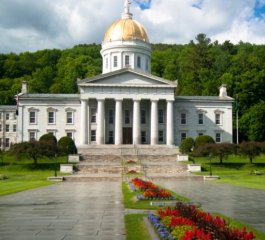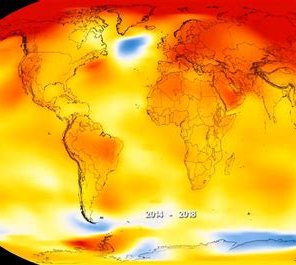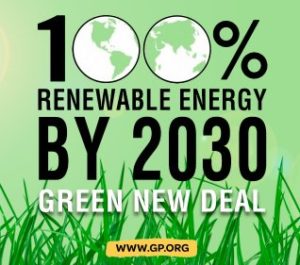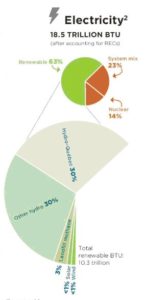Support collective actions and legislation in Vermont
(as well as taking individual actions!)
Contact our Richmond and Chittenden County Legislators
And thank and support them for their climate activism.
This is the website of the Climate Action Caucus

Our Representatives – from https://legislature.vermont.gov/
Representative Jana Brown (Chittenden-1 House) (D)
Senator Thomas Chittenden (Chittenden-Southeast District- Senate) (D)
Senator Virginia “Ginny” Lyons (Chittenden-Southeast District – Senate) (D)
Senator Kesha Ram Hinsdale (Chittenden-Southeast District – Senate) (D)
Here’s information about Pending Legislation in Vermont:
(also, 30 Organizations in Vermont have joined together to push for climate legislation – see the “2020 Plan for Climate Action in Vermont” #ActOnClimateVT for more information)
 H.688, the “Global Warming Solutions Act” S.311
H.688, the “Global Warming Solutions Act” S.311
This bill would enshrine the state’s emissions goals into law, giving Vermonters leverage to sue the state if it doesn’t do enough to curb pollution. The bill passed the House by 105-37 in February 2020 by a wide margin, but Gov. Phil Scott says he opposes the legal mandate, which would give the courts the authority to order action on emissions reductions.
Vermont must move beyond rhetorical support for action on climate and make our long-standing climate action goals requirements – as many other Northeastern states have done. A Vermont “Global Warming Solutions Act” would:
- Make Vermont’s existing climate goals binding targets instead, with action both authorized and required by one or more state agencies to hit said targets
- Set Vermont on a path towards 28% reduction in climate pollution by 2025 (the goals of the Paris Climate Accord) and towards a target of net zero climate pollution by 2050, and a reduction in climate pollution emitted of at least 75% from 1990 levels by 2050.
- Send a strong market signal that will help catalyze entrepreneurial innovation and job creation.
 Multi-state Transportation and Climate Initiative
Multi-state Transportation and Climate Initiative
Vermont is participating in planning for the multi-state Transportation and Climate Initiative (TCI). The 12 Northeast and Mid-Atlantic states and the District of Columbia belong to a coalition that is looking to reduce greenhouse gas emissions from transportation. The coalition released a plan for a regional “cap and invest” program in December 2019. Gov. Phil Scott and other state leaders will have to decide whether to sign onto the plan in spring 2020. TCI would set a regional carbon dioxide emissions cap at current emissions levels that would decline over time to an as of yet undetermined amount. TCI uses the Regional Greenhouse Gas Initiative RGGI (a regional cap and trade program to reduce emissions from electricity) as a model.
 Proposed enhancements to the state’s energy efficiency programs
Proposed enhancements to the state’s energy efficiency programs
Lawmakers have proposed enhancements to the state’s energy efficiency programs. The Senate Natural Resources and Energy Committee unanimously approved a bill that would allow the state’s electric efficiency utilities — Efficiency Vermont and Burlington Electric Department — to spend up to $2 million over the next three years on heating and transportation efficiency projects. The money to fund Efficiency Vermont comes from a charge on electric bills.
Building on Vermont’s current Renewable Energy Standard, which sets a 75% by 2032 renewable electricity requirement, the state should move faster and in concert with other states to implement necessarily ambitious targets, and establish a 100% renewable requirement by 2030.
Conversation is underway to pursue a more ambitious policy, and move the deadline up. Specifically:
- A 100% renewable electricity required for all utilities by 2030.
- Doubling of the in-state renewables requirement from 10%, currently, to 20% by 2030 with a consistent, ongoing increase in required new renewables beyond 2030 and a continued focus on community and grid resilience.
- Expanding “Tier 3,” the current law’s “energy transformation” tier. This tier in the RES requires utilities to help their customers reduce fossil fuel consumption and greenhouse gas pollution in the heating and transportation sectors. It is important to maintain – and explore expanding – this requirement, as a powerful money-saving, carbon pollution tool.
 Reforming Act 250 – the state’s 50-year-old land use law
Reforming Act 250 – the state’s 50-year-old land use law
The Commission on Act 250 has proposed changes in H.926 that include promoting development in downtown areas, protecting forest blocks and further restricting ridgeline development. In a vote of 88 to 52, representatives gave preliminary approval almost three years after lawmakers formally began a review of how to “modernize” Act 250 .
 Energy Efficiency Utility Modernization
Energy Efficiency Utility Modernization
Vermont’s “Energy Efficiency Utilities,” or EEU’ s, are required by statute to make cost-effective electric efficiency savings.
The Renewable Energy Standard update is S.267, sponsored by Chittenden County Senator Chris Pearson. It would increase renewable electricity generation to 100% by 2030, and distributed renewable generation to 20% by 2032. It is fizzling (as of March 11th 2020).
The 100% Renewable Requirement includes a large proportion of Hydro Quebec and other out of state renewables. In Tier 2 it is intended to require utilities to go from 10% to 20% in-state renewables through net metering by 2030. The utilities and Associated Industries of Vermont, the big industry lobby, are claiming that this requirement alone would double rates, so S.267 is now controversial.
Act No. 62. “An act relating to weatherization, a Public Utility Commission proceeding, and unclaimed beverage container deposits” includes funding for Efficiency Vermont, paid for by a small charge on all Vermonters’ electric bills, to reduce electricity consumption through efficiency programs and incentives. It should also give ratepayers savings by lowering rates and avoiding purchases of new energy supply. In 2009 the Legislature established a proceeding at the Public Utility Commission to explore and pursue a new model for our EEU’s focusing on reducing carbon pollution.
This is a huge opportunity – Vermont should:
- Continue to invest in cost-effective electric efficiency – saving all Vermonters money – while expanding the programs our EEUs can offer to allow them to help Vermonters reduce energy use and climate pollution for heating and transportation.
- Make cutting climate pollution a new top priority for EEUs, and retain traditional measures: reduced energy and peak electric usage .
 The “Green New Deal”
The “Green New Deal”
The “Green New Deal” bill S.311 would raise revenue for climate efforts by imposing an income tax surcharge on Vermont’s top 5% of earners. Key senators have said the “Green New Deal” bill is not a priority in 2020.
How You Can Get Involved…
To follow what’s happening and to find ways to support needed progress on climate change, here are a few things you can do:
-
-
- Participate in global climate strikes – in whatever way that you are inspired and able – to show support for young people across the planet who are demanding action.
- Sign up for the Vermont Natural Resources Council’s E-Newsletter at VNRC.org.
- Follow #ActOnClimateVT via social media and participate in events, actions and other opportunities as they arise.
- Follow VNRC, Vermont Conservation Voters and partners “Climate Dispatch” from the Statehouse, every Friday afternoon during the session, via Facebook Live – #ActOnClimateVT.
- Meet with your legislators, regularly, and ask for their leadership and support for bold climate action, such as some of the potential powerful policies listed above.
-

